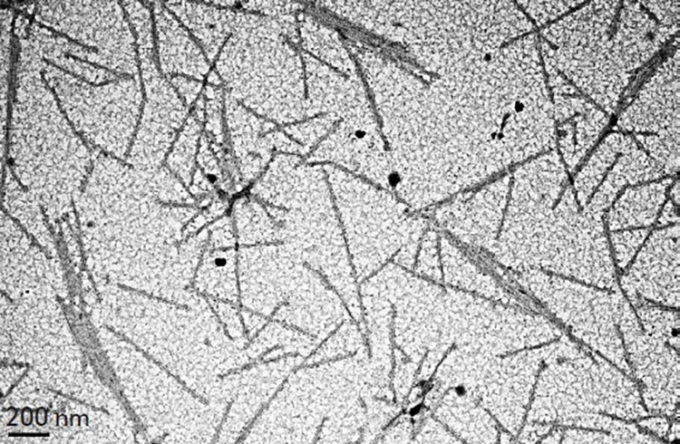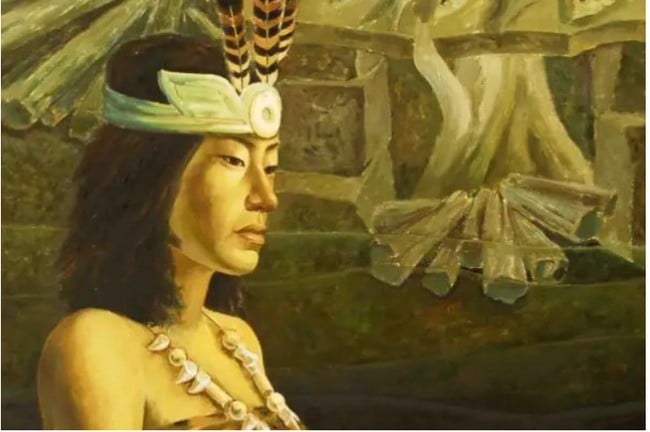Viruses have existed for billions of years but were only scientifically described around the end of the 19th century, the first of which was tobacco mosaic virus.

Tobacco mosaic virus under transmission electron microscopy (TEM). Photo: Research Gate
The first step toward the discovery of viruses came in 1876, when Adolf Mayer, a German agricultural chemist and director of the Agricultural Experiment Station in Wageningen, described a strange leaf spot disease on tobacco plants. He believed the disease was caused by bacteria or fungi, but microscopic examination and laboratory tests failed to reveal any organisms.
A breakthrough came in 1892 with Russian botanist Dmitri Ivanovsky. He discovered that infected plant sap remained infectious after passing through a filter that held the bacteria. Ivanovsky knew he had found something new.
In 1898, Dutch microbiologist Martinus Beijerinck independently repeated Ivanovsky's experiment and offered a somewhat clearer explanation. Beijerinck argued that the experiment showed that tobacco mosaic disease originated not from bacteria, but from a "living infectious fluid." He began to use the term "virus" to describe the "non-bacterial" nature of the pathogen.
During this time, experts discovered several other pathogens that also passed through the bacterial filter, including hand, foot and mouth disease, rabbit skin disease, African horse sickness, and chicken pox. However, the exact nature of this "invisible" pathogen is still not well understood.
The identification of the cause of yellow fever was a major milestone in the history of virology. During the Spanish-American War in 1898, American troops were struck by the disease as they arrived on the coast of Cuba. Thanks to the work of Walter Reed, James Carroll, Aristides Agramonte, and Jesse William Lazear, it was learned that the disease could be transmitted through filtered serum from a patient. This discovery made yellow fever the first human infectious disease to be identified as being caused by a virus.
It wasn't until 1931, when the electron microscope was invented, that scientists could see viruses. Once again, tobacco mosaic virus became the first virus to be photographed.
Another pivotal moment occurred in the 1950s with the work of Rosalind Franklin. She used X-ray crystallography to determine the structure of the tobacco mosaic virus as a single-stranded RNA molecule surrounded by a protein membrane. Her other work helped demonstrate that DNA is a double-stranded molecule, leading to the famous discovery of the double-helical structure of DNA.
More than a century after their discovery, viruses still baffle, amaze, and can cause disaster. Today, there is still much debate about whether viruses are “living” entities.
Viruses are effective parasites. They need a living cell to reproduce and cannot grow independently outside a host like bacteria and other free-living microorganisms. However, they are made of DNA or RNA - components that are essential to life. Most scientists now believe that viruses qualify as "alive", although they continue to surprise us with new discoveries.
Thu Thao (According to IFL Science )
Source link




















![[Video] Approval of the Master Plan for the Construction of a High-Tech Forestry Zone in the North Central Region](https://vstatic.vietnam.vn/vietnam/resource/IMAGE/2025/4/12/93e860e3957940afaaab993c7f88571c)












![[Photo] "Beauties" participate in the parade rehearsal at Bien Hoa airport](https://vstatic.vietnam.vn/vietnam/resource/IMAGE/2025/4/11/155502af3384431e918de0e2e585d13a)
































































Comment (0)